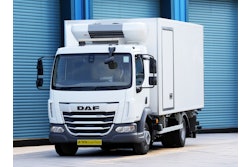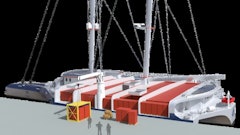
How and where groceries and other perishable items reach consumers as the final step of the cold chain continues to evolve. Weekly in-person shopping trips at the local store, once standard for all consumers, made planning straightforward for retailers and suppliers. However, the growth of
e-commerce, coupled with new fulfillment/delivery options, has shifted patterns. How food and other perishables reach consumers has changed dramatically in the last decade with home delivery.
A pandemic shift
Even before the COVID-19 pandemic, more retailers began offering shipping options such as “buy online and ship to home” or “buy online and pick up in-store.” It was easy to purchase food online and have it arrive at home right on schedule. Shoppers loved the convenience and retailers capitalized. However, what worked for some goods didn’t work for refrigerated and frozen food items. Retailers found it cost-prohibitive to create the final-mile delivery infrastructure for cold chain items. As a result, in-store shopping dominated consumer behavior for grocers.
That all changed in 2020, with an almost 180-degree turn in consumer behavior. Consumers shied away from stores and moved into contactless ordering and grocery home delivery. Retailers were forced to quickly ramp up the infrastructure needed for new grocery delivery demand.
Five years after the pandemic spike in grocery delivery, demand has seen some ups and downs but continues to trend upward. But what has not changed is that consumers continue to lean into convenience and time savings. According to a recent survey from Brick Meets Click, around 30% of households use some combination of delivery, pickup and ship-to-home. In March 2025, U.S. e-grocery sales hit $9.7 billion, with $4.2 billion spent on delivery alone.
Major grocery retailers significantly expanded their delivery capabilities. Retailers are strategizing and setting up new systems to meet customer needs via final-mile grocery delivery, while still driving profitability. These retailers are taking a closer look at the technology and transportation options needed to deliver food.
They've invested in technology to enhance online grocery shopping, developing mobile apps, using AI for personalized recommendations and building automated fulfillment centers. However, the backbone of their delivery system remains temperature-controlled transportation.
Reimagining thermal efficiency
To carry out grocery and other temperature-sensitive home deliveries, companies rely on light-duty trucks. Yet, during the past 40 years, these vehicles have seen little innovation in their design or technological features.
Today, innovative truck body OEMs are leaning into one of the biggest areas of innovation -- advanced composites. Conventional refrigerated bodies use insulation foam sandwiched between aluminum posts and metal skins. Composite panels offer a smarter alternative. Composite construction consists of a foam-insulated core surrounded by a polymer fiber-reinforced shell with a protective gel-coat surface. The result? A truck body that’s lighter, stronger and better at keeping cold air in.
Fleets using composite construction benefit from improved fuel efficiency, lower energy demands on the refrigeration unit and a meaningful boost toward sustainability targets—all without compromising performance.
Reducing the weight load
Final-mile grocery delivery trucks work hard, often running long hours while carrying goods that require multiple temperature zones. While composite panels are key for thermal efficiency, they also enhance the overall structure of the truck body. Unlike traditional construction that relies on metal posts for strength, composite panels provide the needed rigidity without the thermal drawbacks of metal. Removing metal from the structure helps maintain consistent internal temperatures and reduces vehicle weight, leading to meaningful a meaningful savings in fuel costs or range and increased payload.
Composite panels also provide a smoother exterior surface, minimizing gaps where water can seep in and be trapped. Less moisture reduces the risk of corrosion and thermal degradation. A more uniform construction also helps eliminate hot or cold spots inside the truck body, supporting consistent temperatures throughout the cargo area and better overall thermal efficiency.
New solutions like composite panels enhance the cold chain and overall truck body performance by combining thermal efficiency and structural integrity in a single package.
Fueling the future of cold chain transportation
The final-mile cold chain is under growing pressure to modernize. Meeting the demand for climate-controlled delivery of temperature-sensitive goods such as pharmaceuticals, produce and perishable foods while maintaining strict safety and quality standards is a complex challenge. Emerging technologies like sensors, real-time tracking and data analytics offer powerful tools to tackle these issues. At the same time, advances in vehicle design — such as improved thermal efficiency and lighter materials —are also playing a key role in moving the industry forward.
By adopting new energy-efficient solutions, such as composite technology, the industry can better meet growing demand for reliable home delivery while reducing environmental impact. With the right investments in innovation, cold chain fleets can improve efficiency, comply with evolving regulations and deliver a better customer experience in an increasingly competitive landscape.


















